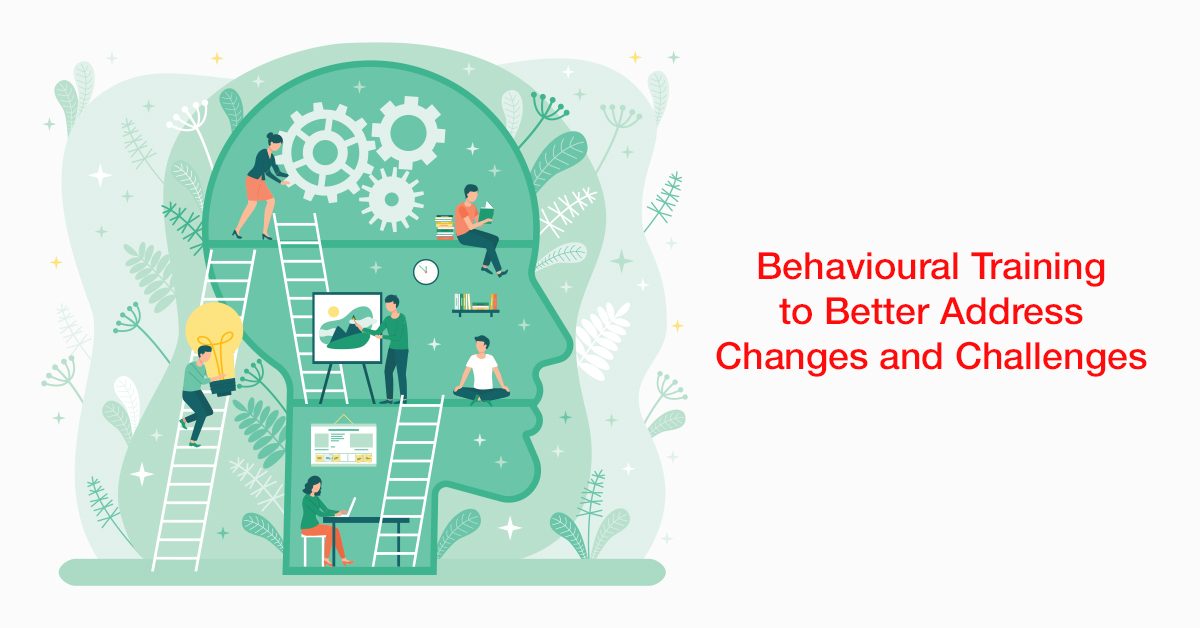
Simplifying employee training with these 9 learning principles:
- Why simplifying employee training is important
- 9 Learning principles to simplify employee training
- Our services as custom eLearning development agency
Why Simplifying Employee Training is so Important?
Simplifying employee training is an assured way of increasing the ROI of your training initiatives. Instead of diving into the more complex aspects of developing training for corporate employees, start by incorporating the simpler or rather the fundamental aspects of training and learning.
You can individually incorporate these principles into the training. The outcome of which is a rounded and complete training program. Think of each as a part of a checklist for learning and development professionals to go though as they design and finalize their training program.
The 9 Learning Principles to Simplify Employee Training
-
Using Self-Paced Learning to Suit Every Learners’ Needs
One of the main aspects of being an adult is the ability to do things at your own pace. The same applies to learning as well. It is important to allow your corporate employees the ability to learn and develop at their own pace. However, this does not mean that there are absolutely no deadlines associated with the training. Instead, employees continue training and developing at their own pace with complete knowledge of the deadline.
-
Technology-Enabled Learning for Modern Employees
Avoiding technology-assisted training for any reason in today’s times is a gross miscalculation. Technologies like learning applications, learning management systems, and learning experience platforms are designed to simplify the access, delivery, tracking, and assessing of training. It makes both the trainer and the employee’s life simpler. There are so many options available on the market. However, as a standard rule, always choose a vendor with a demonstrated background and history in all things eLearning related.
-
Blending Learning Types for All Rounded Corporate Training
Corporate training cannot simply rely on just eLearning-based training. Similarly, it cannot simply rely on traditional training alone. Rather, designing a blended learning experience keeping in mind both the theoretical and practical aspect of training will yield greater results.
By blending, we mean throwing in additional training concepts like:
-
On-The-Job Training (OJT)
-
Mentorship
-
Shadowing (where learners follow and observe a peer)
-
Buddy System (where new employees pair up with a peer)
-
Structured Learning Content to Simplify and Streamline Delivery
Streamlining the way your training delivery is a good way to simplify a training concept. In simple, it is best to start with the head of the topic and conclude by describing the tail. Once your learners understand that all the training you design follows this exact design specification every single time, they are going to be much more comfortable with you rolling out new training every time you do. Knowing and familiarizing with training is comforting to learners. Knowing how the training gives learners sense of familiarity.
Familiarity is very important when learning something new. You want learners to anticipate what comes next correctly. This is better than making your learners fret over guessing what comes next and probably getting it wrong.
-
Introduction
Simple and straightforward. This is where you introduce learners to a topic on hand. Everything a learner needs to successfully complete the course is mentioned here. All the takeaways and applications are describing here. It is all about interesting your learners and piquing their interest in this section.
-
Rationale
This is where you convey the rationale behind designing and deploying your training. This is where employees understand why training is important. It is about rationalizing the reason to learn.
-
Objectives
As the name suggests, it is about outlining the objectives for the training and why the learners should complete the course. List down the why here that shows the learners what they will achieve by the end of that training. This step is important because it is where your learners understand what’s in it for them.
-
Content Delivery
It is here where you determine the format in which the training will be delivered. Blended, eLearning, classroom, all of that is determined and planned here. One thing to keep in mind is that eLearning and blended training are the preferred methods of delivering training for adults in a corporate setting.
-
Assessments
Training is incomplete without testing and assessing to determine if the training is retained enough to be put into practical application. One of ways of doing this quick is via assessments that should be placed at regular intervals to ensure systematic progression through courses by successfully completing and retaining the training within each module.
-
Feedbacks
Based on the assessment, it is important to provide feedback. This feedback is meant for self-directions and development and improving certain aspects of your learners’ everyday functioning at the workplace.
-
Outcome-Based Training to Give Learning A Purpose
This is where the outcome of completing a training is determined and conveyed to the employees or learners. Rather, it is in search of a desired outcome that training should be designed. The outcome can be anything like upskilling, promotions, boost productivity, and so on. Learners display greater affinity towards training and development when the training in question is tied to a possible outcome. Basically, it gives meaning to train.
-
Ability to Access Training Based on Convenience
Here is another adult training principle which is very important. Ability to access training based on convenience is a thin line in between encouraging adult learners and demotivating them completely. You may ask why? Well, this is because adults usually have short periods of free time in between their busy schedules.
It is during these periods of free time that many choose to learn something new or continue learning something they previously started. But when the training is not freely available, for example on both the mobile and a PC, it makes the training exclusively accessible on one device. And that is something that an adult learner will consider as inconvenient. Rather, you have to make it look as though the training is highly convenient to access from anywhere using any device. That will certainly encourage them to take the training even when they’re travelling or waiting at the coffee shop.
-
Testing the Knowledge Gained
Yes, this is the same as assessments which is a crucial part of the training delivery. Assessing to test the knowledge gained is also an important part of the adult learning theory. Unless the knowledge gained is not tested for recall value or practical application, it is just something that the learner heard, read, or knows with a high possibility that they forget or never apply it altogether. So testing is as important as delivering training.
-
Applying Training in Real-Time
Another great adult training principle to aid with easy training development is ensuring that learners apply the training in real-time. Now, you cannot create a situation for learners to first train and then apply their training somewhere. Rather, you first identify what your learners are already doing, then proceed to provide them training based on current workload and then expect them to apply the training.
Training application is a sure way of encouraging maximum retention. The more your employees apply, the more they will remember.
-
Mixing the Format and Type of Training
eLearning is vast. Each type suits a specific need. For example, animated explainer videos convey training in the form of a story with visual elements to support complex explanations. Similarly, slide-based eLearning is great for technical training. Scenario-based training tests your learners’ retained knowledge by applying it to situations.
How to Start Simplifying Employee Training?
As evident, these principles are based on how adults react to certain aspects of knowledge transfer, while also looking into the everyday lives of adults and then designing an optimal training program. We have been assisting organizations build similar training since 2007 and we predominantly cater to the corporate segment, which means we know how to build adult training.
If there’s something more that you’d want to know or talk to one of our experts about simplifying employee training, reach out to us contact@enyotalearning.com or click this form to know more.



